Without any of Samsung's embarrassing show stereotypes and circus theatrics, Apple unveiled its "forward thinking" new iPhone 5s as not just "what's next," but "what should be next," advancing mobile devices into the 64-bit computing world for the first time.
The new iPhone 5s joins the previously considered iPhone 5c as a pair of new options that take the company's existing flagship iPhone 5 in new directions. While the 5c takes the 5 into the mainstream with iPod-inspired colors, the 5s raises the bar to create a new luxury tier (although not without color options of its own).
Like the iPhone 5c, the new 5s offers expanded support for new LTE bands, enabling support on additional carriers worldwide.
While there were three model variants of iPhone 5 (A1428 North American GSM; A1429 CDMA & Global GSM; and A1442 for China Telecom CDMA with UIM/WAPI but no LTE support) there are four versions of iPhone 5s (A1533 North American GSM/CDMA for both ATT & Verizon; A1453 Sprint/Japan CDMA with additional support for LTE bands 18&26; A1457 for Europe lacking LTE bands 4/AWS, 13, 17, 18, 19, 26 but adding 7; A1530 for Asia/Pacific, identical to Europe but adding support for China Mobile's TD-LTE bands 38, 39 and 40, which is also used in Australia).
Both models also now include $40 worth of first party, chart topping apps exclusive to iOS: Pages, Keynote, Numbers, iPhoto and iMovie.
iPhone 5s Camera, True Tone Flash
One readily apparent external difference on the iPhone 5s is its dual element flash (below), which Apple refers to as "True Tone." It incorporates both a cool white and warm amber flash that are used together in independently variable degrees to match the needed flash intensity and color temperature with the ambient lighting conditions when taking low light photos.
Apple notes the result is more accurate colors and more natural, flattering skin tones, illustrated in the example presented during the keynote (below).
While not evident on the outside (or even in spec listings, where the camera element is "still" rated as 8 megapixels), the camera sensor itself is also enhanced, using a 15 percent larger sensor with larger 1.5 micron pixels.
Packing more pixels into the same sensor size increases the "megapixel" number, but doesn't necessarily improve the image quality. Instead it may actually increase the noise due to crosstalk, and has the side effect of creating photos that take up significantly more space. To get better pictures, you need the largest possible sensor, not just more "megapixels."
The lens is also important, because a larger aperture means more light can hit the sensor for capture. iPhone 5s sports new optics with a larger f2.2 aperture. Apple has also enhanced its camera capture software, which begins automatically setting the white balance, generates a dynamic local tone map, and performs autofocus matrix metering across 15 focus zones, approaching the sophistication of a standalone point and shoot camera.
iPhone 5s Burst & Slomo features
A new Burst mode lets you hold down the capture button to take multiple "paparazzi" shots rapidly in sequence. The device analyses the captures and recommends the best ones, looking for faces, focused subjects and lack of motion blur, among other criteria.
You can also manually review the batch capture and select images to save, then delete the rest in one swoop. The new feature works in both standard photo and square modes.
A parallel new "Slowmo" video capture feature lets you record video at 120 frames per second, then pick a section of your video to present in quarter-speed slow motion, supporting a cinematic sequence where regular speed video enters a "Matrix-like" high frame rate slow period that you can adjust as desired, then share as a normal video.
Apple has also enhanced Panorama capture to account for differences in exposure as the image is captured, such as when taking a wide shot involving a bright window. The adaptive new Panorama works similar to HDR to present a better final result than the camera element physically can without advanced processing.
iPhone 5s and the new 64-bit A7
These new camera features aren't just fancy software; they are incredibly computationally intensive operations that earlier devices simply lack the horsepower to handle. Supporting these advanced camera features is Apple's new A7 chip, the first 64-bit processor in a smartphone.
While 64-bit desktop computing largely offered advantages to applications that worked with large data sets that needed to access more than 4GB of RAM (such as Photoshop), moving to 64-bit in the ARM world has other advantages.
Pundits have already started issuing shill contempt for Apple's "first to 64-bit" claim, but you can identify those that don't know what they're talking about much by how many times they repeat the idea that you need a 4GB boundary before you need a 64-bit processor architecture, while also noting that iOS devices haven't hit any 4GB frontier (iPhones and iPads have historically maxed out at 1GB of system RAM; iPhone 5s appears to have 2GB).
Today's 32-bit mobile ARM architecture began in 1990 in a joint project by Apple and Acorn aimed at creating a mobile processor for the Newton Message Pad. That device used a chip known as the ARM 610, using the third generation ARMv3 instruction set.
That was a long time ago, and in the more than two decades since, the ARM architecture has advanced significantly. The original 2007 iPhone was powered by an ARM1176 component using sixth generation or ARMv6 instruction set CPU core.
More recent iPhones have all used the ARMv7 instruction set. For last year's A6, Apple created a custom "Swift" core using an extended ARMv7 instruction set and based on the ARM Cortex-A9 architecture, incorporating some features of the ARM Cortex-15 architecture designed for server applications.
Since then, Samsung debuted its own chip for the Galaxy S4 using stock ARM Cortex-15 cores, and optimized to shine at benchmarks. Apple took a different tack with its own A7, jumping to the new 64-bit ARMv8 instruction set of the ARM Cortex-A50 series core designs.
The modern instruction set of ARMv8 not only supports running both 32- and 64-bit apps, but also expands the number of both floating point and general purpose registers, uses 64-bit addressing and allows 32-bit instructions to take either 32- or 64-bit arguments. These upgrades are a package deal, and each part of the jump is significant and noteworthy. It's simply ridiculous to maintain that Apple pulled off the first production use of the 64-bit ARM architecture just as a marketing ploy designed to fool its customers into thinking they were getting a faster device that wasn't really improved.
It's simply ridiculous to maintain that Apple pulled off the first production use of the 64-bit ARM architecture just as a marketing ploy designed to fool its customers into thinking they were getting a faster device that wasn't really improved.
Take notice of the fact that there wasn't criticism of Samsung's use of Cortex-15 cores (which didn't really yield any blockbuster, real world performance gains on the GS4 this summer), but there's no shortage of parade rainmakers for Apple's leap to ARMv8.
Advancing to a 64-bit instruction set essentially means that big math problems can be worked out faster in larger chunks, not just boosting performance but also allowing the processor to finish its work faster and drop back down into a lower power mode, contributing to energy savings even while delivering up to twice the computational performance.
In addition, Apple's experience in porting OS X to the 64-bit Power PC G5 and then again with the Intel transition to 64-bit has not only equipped the company to make a third 64-bit transition on ARM, but also affords a "seamless developer transition" for third party apps.
iOS 7 on iPhone 5s gets a native 64-bit kernel, libraries and drivers and Apple has ported all of its own bundled apps to 64-bit, but the device can run both 32- and 64-bit apps without users needing to worry about which they have.
As developers make the transition via Apple's Xcode support for 64-bit, App Store titles can be delivered in "fat binaries" with both sets of code, allowing users to run apps that automatically work correctly, depending on the hardware being used. And note that ARM code isn't what takes up space in typical iOS apps: its typically the graphics and other assets, making "fat binaries" really fat in name only.
Enhanced graphics cores now also support OpenGL ES 3.0 in iOS 7, and Apple says this can boost graphics performance by a factor of two as well. This is particularly important in console-style mobile games, a field that has been dominated by iOS, where developers can concentrate on a limited set of standard hardware rather than dealing with multiple fractions of Android versions each running on different GPU architectures.
iPhone 5s and the new Touch ID
Another enabling technology afforded by the A7's advanced computing power is the mathematically intensive task of the Touch ID sensor, a fingerprint scanner (pictured below) that essentially takes an extremely high resolution image of your finger and maps out the unique patterns of valleys and ridges on the skin's surface. This has to happen extremely rapidly to be useful and practical.
Apple has made configuring Touch ID extremely simple: you create a new fingerprint profile, then repeatedly touch the sensor as it collects a profile of a specific print.
You can do this for multiple fingers, even for multiple prints of more than one person. Each authorized print has the ability to unlock your phone. In the future, Apple will likely expand the supported features to enable tasks such as launching apps with different prints. For now, the fingerprint system is designed solely to authenticate unlocking the phone and to authorize purchases from iTunes (shown below).
No other apps have access to the fingerprint system and your fingerprints are only ever stored in a secure "enclave" on the device itself; they aren't uploaded to iCloud or otherwise backed up to Apple's servers, in order to prevent any security concerns related to leaks or shared access to identifying biometric data.
The new Touch ID sensor is surrounded by a distinctive metal ring that detects the presence of a finger. The sensor itself lies behind a protective sapphire lens and on top of a clickable Home button (show exploded, above).
iPhone 5s and the new M7
Another unique feature of the 5s is its new M7 coprocessor, designed solely to process motion data from GPS, accelerometers and gyroscope, the digital compass and other sensors.
"It takes advantage of all these great sensors and it continually measures them without having to wake up the A7 chip," Apple's head of worldwide marketing Phil Schiller noted, adding that even in sleep mode, the device could tell if a user is "stationary, running, walking, or driving."
By offloading motion-related tasks to a dedicated chip, the system avoids constantly activating the A7, allowing motion related tasks, including health and fitness apps, to efficiently run in the background without draining the battery as quickly. One of the first apps to take advantage of M7 is Nike+ Move.
M7 also helps adapt the iPhone 5s depending on how its being used. "M7 knows when you’re walking, running, or even driving," Apple says. "For example, Maps switches from driving to walking turn-by-turn navigation if, say, you park and continue on foot. Since M7 can tell when you’re in a moving vehicle, iPhone 5s won’t ask you to join Wi-Fi networks you pass by. And if your phone hasn’t moved for a while, like when you’re asleep, M7 reduces network pinging to spare your battery."
 Daniel Eran Dilger
Daniel Eran Dilger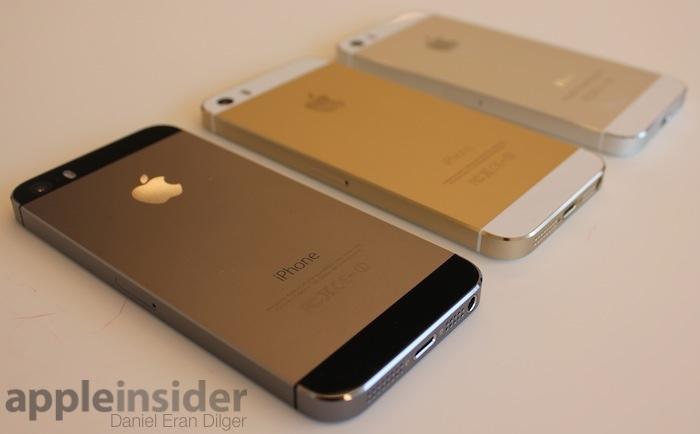
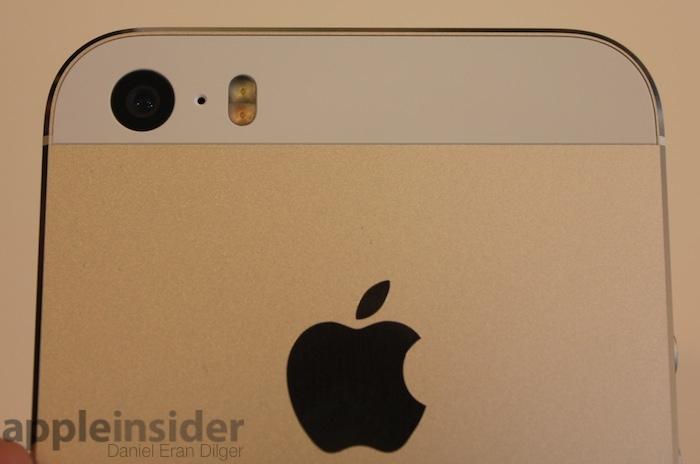

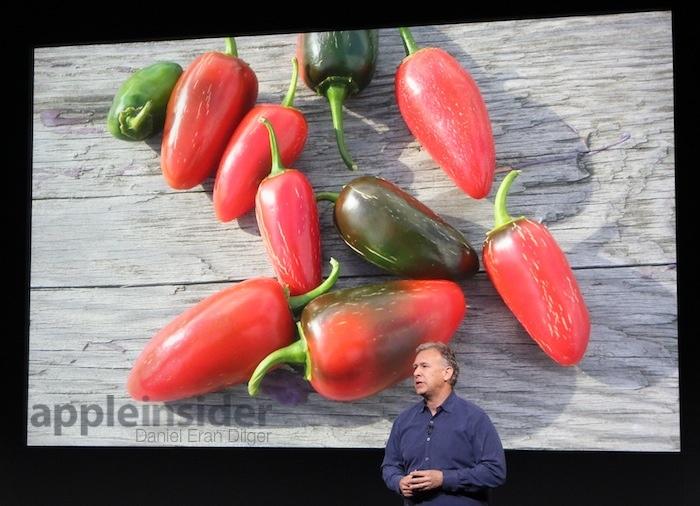
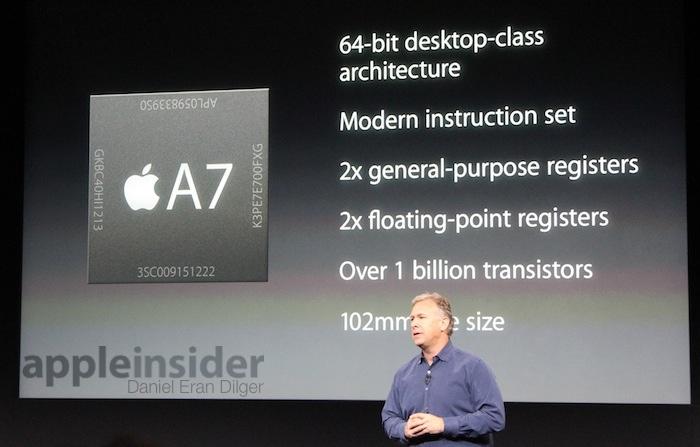

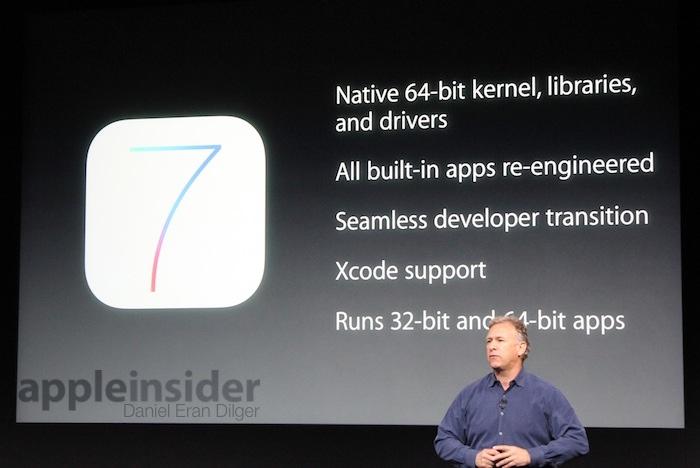
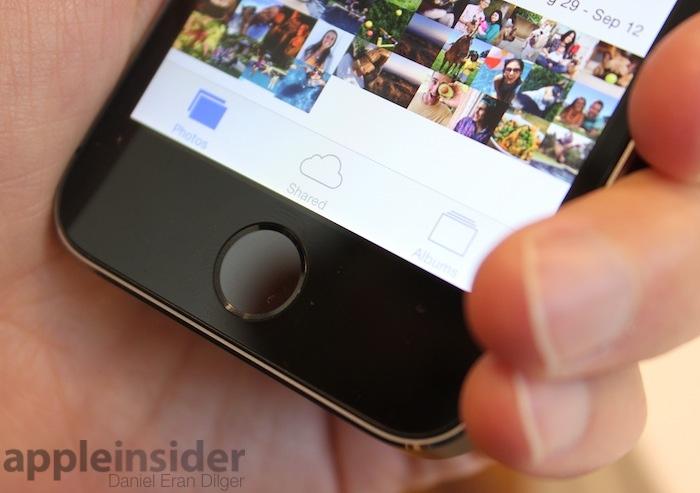
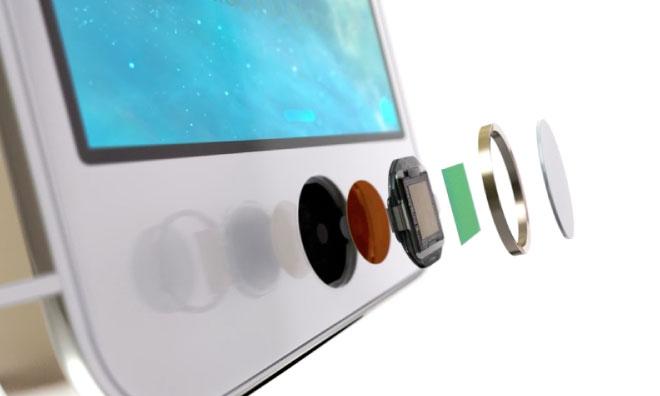
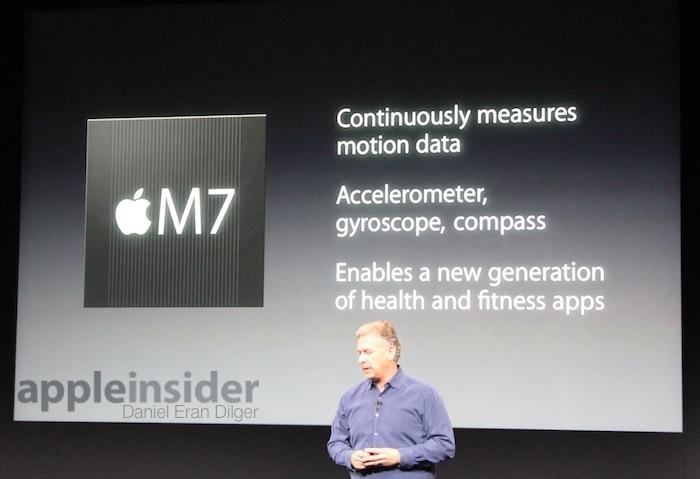
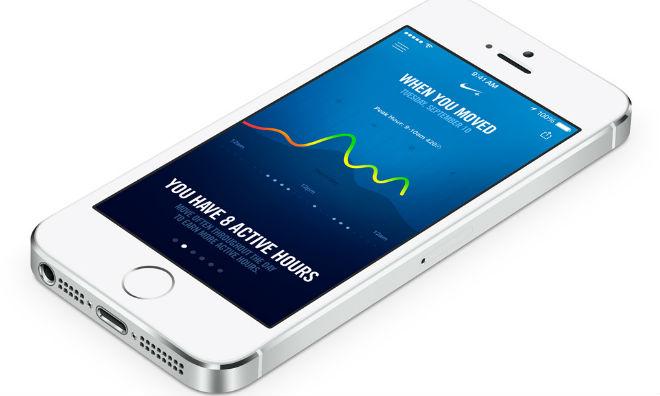







-m.jpg)






 Marko Zivkovic
Marko Zivkovic
 Christine McKee
Christine McKee
 Andrew Orr
Andrew Orr
 Andrew O'Hara
Andrew O'Hara
 William Gallagher
William Gallagher

 Mike Wuerthele
Mike Wuerthele
 Bon Adamson
Bon Adamson


-m.jpg)



166 Comments
Wow. Great article. Thank you so much apple insider staff. Go on.
DED, I got your fingerprint now. ;-)
My Precious! [IMG ALT=""]http://forums.appleinsider.com/content/type/61/id/31355/width/500/height/1000[/IMG]
First, I want to note that I enjoy Apple products and plan to purchase the 5s when it gets released.
That being said, why all of the Samsung bashing? A hands-on article like this on a pro-Apple website (nothing wrong with that) should focus exclusively on the phone itself. Instead, this "hands-on" article just seems to be trying to defend Apple's design choices against Samsung. Even the sub-header of the article states that, "
This phone truly looks like an incredible device. Superlative on all fronts. Don't see how someone can reasonable bash it, except for those that want phablets, and "open". The days of "lol iPhone doesn't have X or Y feature" are over. The only thing Apple bashers have left to cling to is "widgets", and convincing themselves the gimmicks that other manufactures shit out, that barely work, are useful and valuable.